To me, Nantes is an ideal soft break for city people—those who aren’t necessarily looking for a hardcore getaway like a beach resort but simply another, nicer place to “live” for a few days. As a city, Nantes is perfectly sized, with two rivers running across, walkable (and enjoyable), artsy, alive with locals, pro-tourism, and has a great public transit system that peacefully co-exists with cyclists and pedestrians even without traffic lights. Additionally, while its roots in history, arts and culture run deep, nothing feels too serious or stuffy. Lively urbanity and play-focused programming are transforming the old, heavy relics of its industrial past. When walking around the city, I love seeing local business owners in their small spaces showcase their craft for their clientele. The boulangerie, patisserie, boucherie, fromagerie, charcuterie, cave à vins, and bistros—while small—are all thoughtfully curated and presented. Everything is just NICE, which has become a luxury in big cities where overly commercial relationships often create too much pressure for everyone involved.
Mornings
Enjoy the city in peace before public life wakes up properly. I followed the delicious baking smell. I picked up a butter croissant from local boulangerie Au P'tit Pain Nantais. (Breton butter is particularly famous for its perfect salted-ness.)
Walk along the Erdre River (a tributary to the Loire) and step into Île de Versailles for a peaceful park walk in the Japanese-inspired landscape. After circling back towards the city, stop by Talensac Market as the vendors put out their beautiful display of seafood, meat cuts, and fresh produce. Back in the city, pick up a coffee at Cime and walk towards Cours Cambronne for a nice little sit while dog-watching. On your way, you’ll walk past Place Graslin where cafes on the sunny side of the plaza are already bustling.

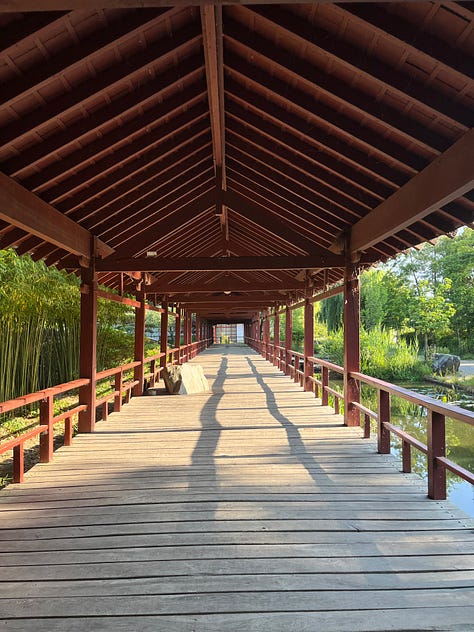
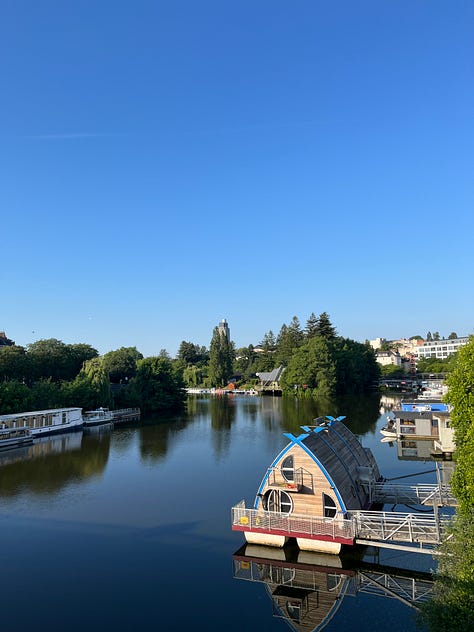

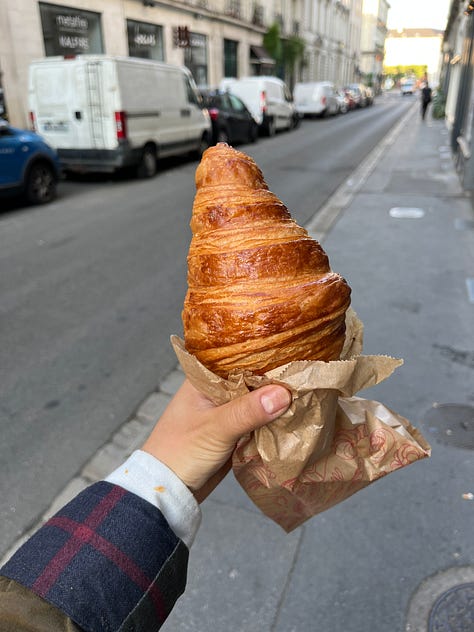

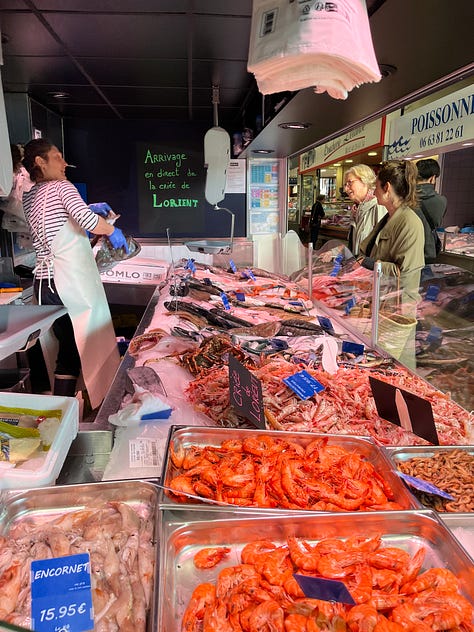
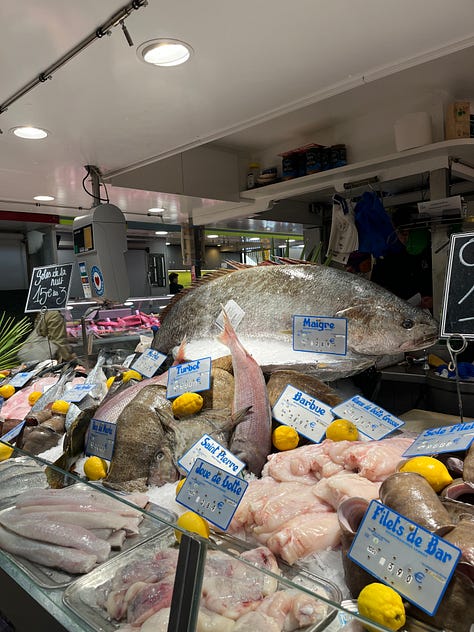
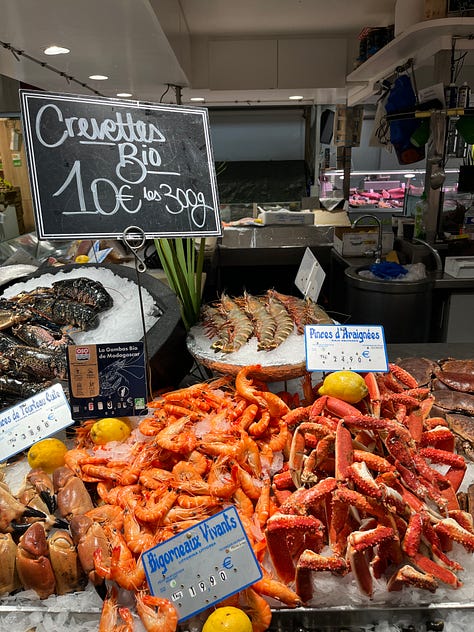
Continue to Musée Dobrée, filled with well-curated rooms of historical artifacts and amazing interactive animations. It showcases the life of abundance in Nantes back in the 19th century and explains the dramatic history of Nantes and Brittany.
After a few hours in the museum, enjoy lunch at the museum café in the sun or, better, stop by the traditional Breton creperie La Gavotte across the street for delicious galettes (I got a lunch set for savory galette, butter crepe, and cider for 15 euros). Most restaurants open for lunch and have really great 2/3-course lunch sets around 15-25 euros. Another good option nearby is Thelma, the new sister bistro of more upscale Roza. I went there for dinner and had amazing beef tataki and fresh clams. Before leaving the area, stop by Izi Cafe for an espresso tonic and jazz.
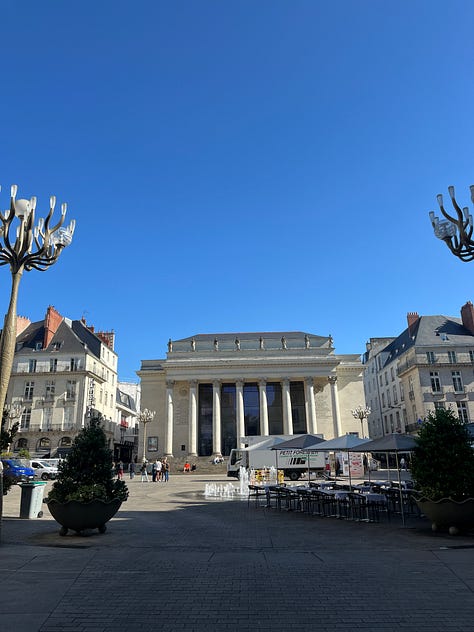
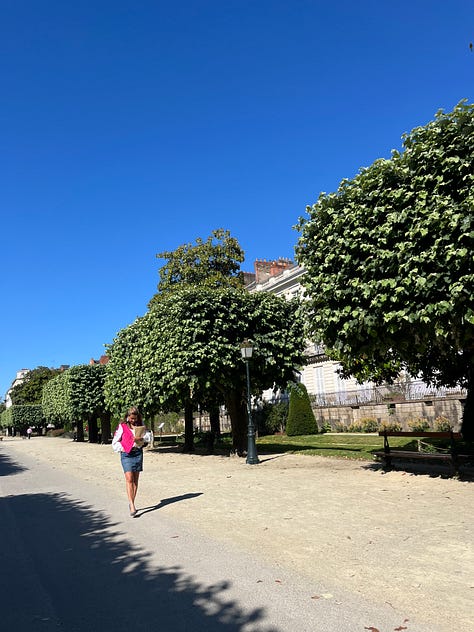


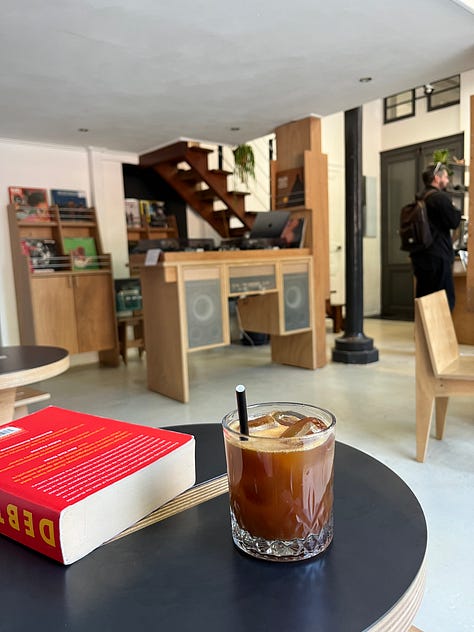
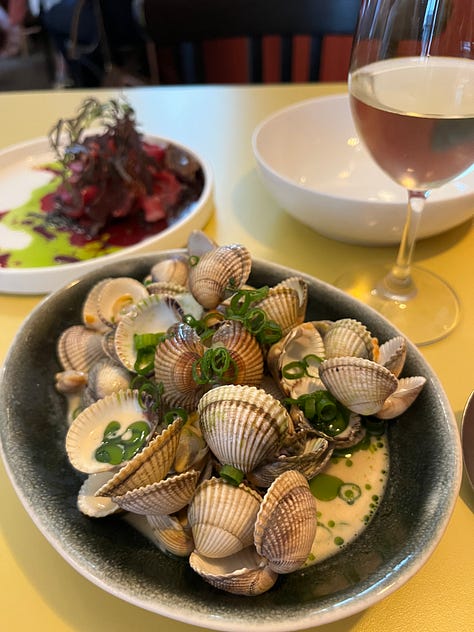
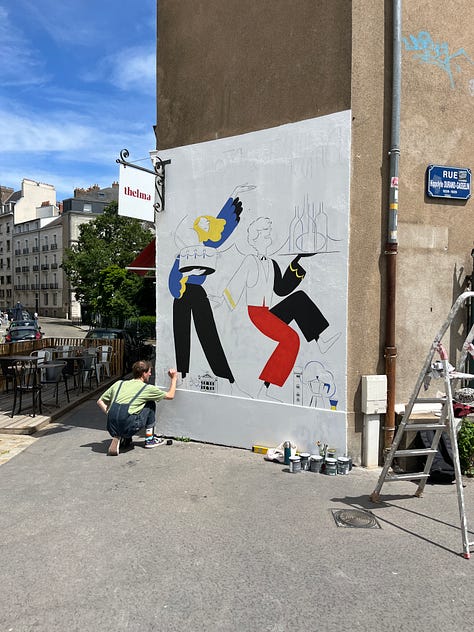

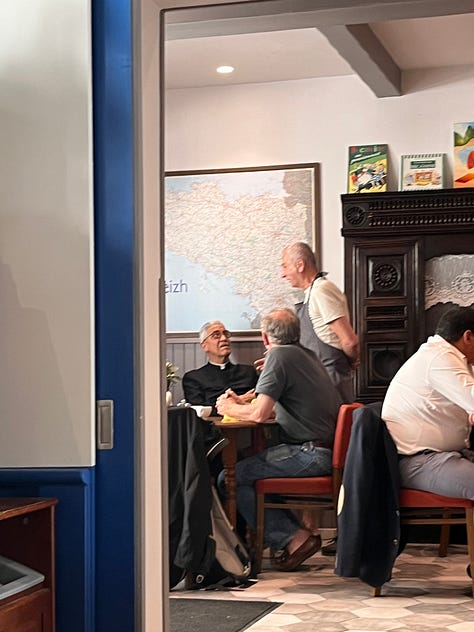
Afternoons
Head towards the restored, medieval Château des Ducs de Bretagne, where the Dukes of Brittany once lived. It’s nice to walk around the fort to see the city, and the museum often has good art exhibitions. After the castle, head towards the botanical garden Jardin des Plantes, for a peaceful sit-down and see the exotic plants that were brought back from past sailing trips. The Café de l'Orangerie in the garden serves drinks and has live DJs from late afternoon. The mix of crowds, the outdoor hangouts, and the techno/house reminded me of Berlin. Musée d’arts de Nantes is also by the garden and opens till 7pm (and 9pm on Thursday).
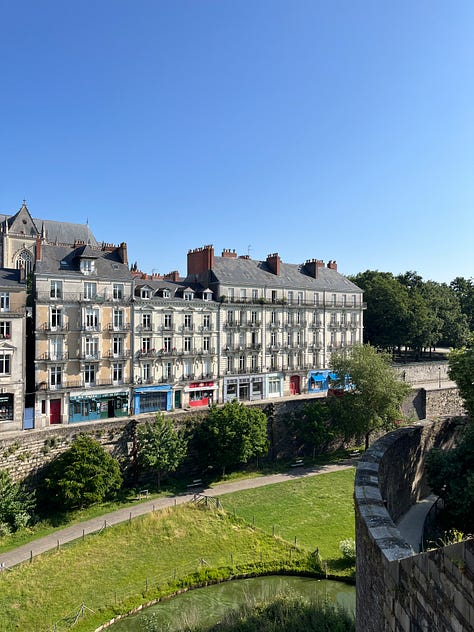

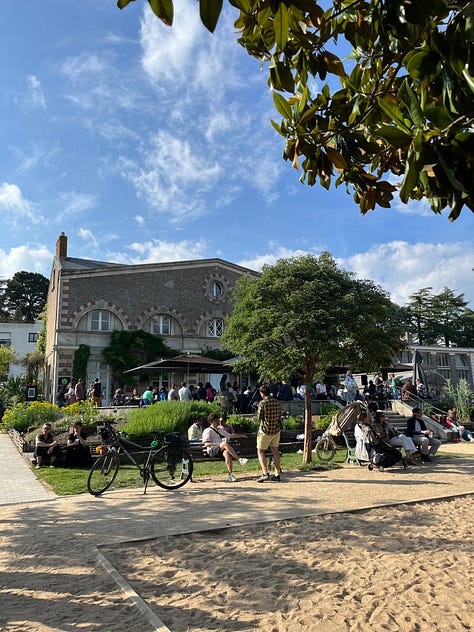
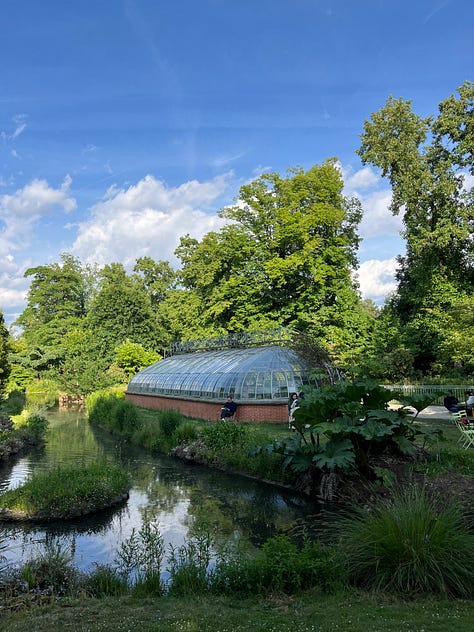
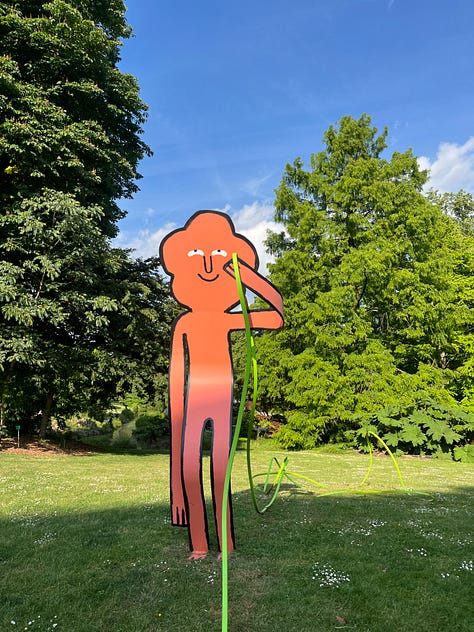
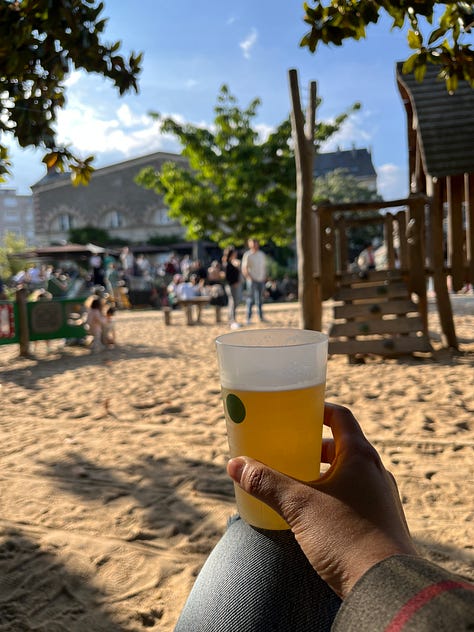
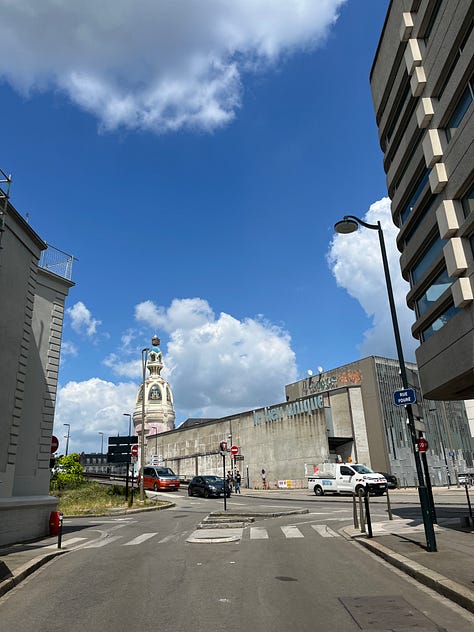

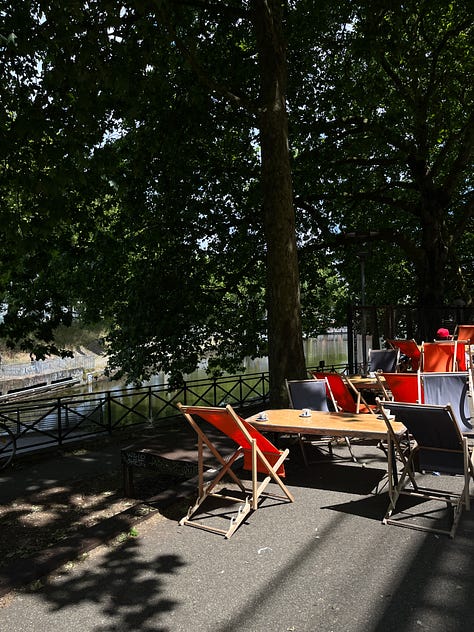
Walk south towards the Loire River and stop by Le Lieu Unique, which has converted the LU biscuit factory into a multi-program creative space featuring a bookshop, bar, and performance venue. Continue down towards Quartier Madeleine south of the former island Feydeau, where hip local eateries and more boho-chic vibes are found amongst the humbler-looking buildings. There are some cool office buildings tucked away in the smaller streets—more of an early-gentrifying neighborhood feel. I had a delicious 3-course mystery set lunch at Les Chants d'Avril, where you only get to choose between fish or meat as your main course. I also walked past Boulangerie La Fourmi, and I saw some giant croissants of my dreams and handsome sandwiches.
Alternatively, visit the grandiose shopping arcade Passage Pommeraye and shop around in the city center, especially along Rue Crébillon.

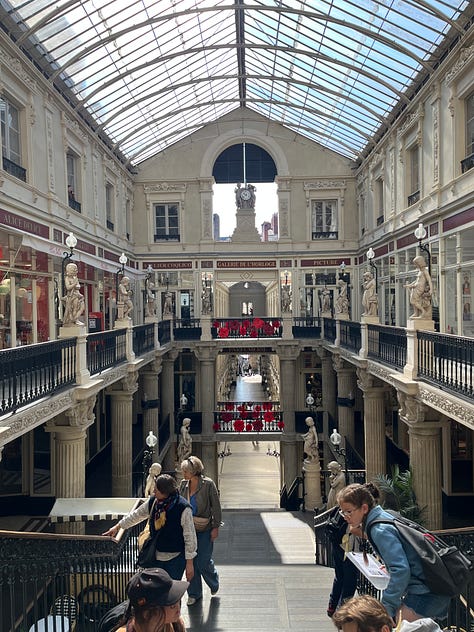


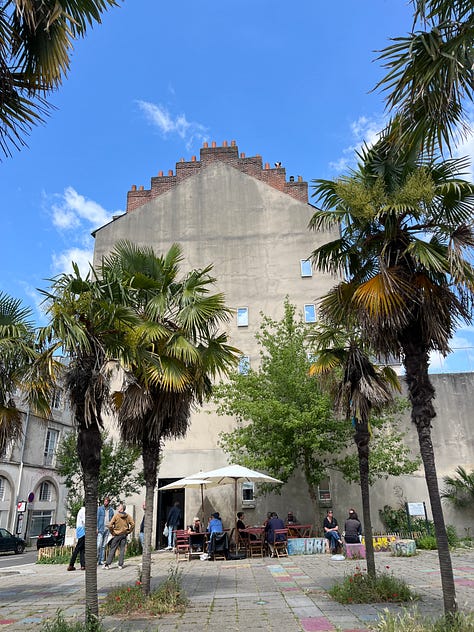




Evenings
Head south towards Île de Nantes, the former naval shipyards and warehouse re-imagined for modern urban living and creative public spaces. The really fun stretch starts from Les Machines de l'Île, where the giant machine elephant (featured prominently in Nantes posters) and elevated sea-themed carousel are located (think Burning Man/steampunk but kids-friendly). You can book tickets to get on the elephant that comes out for walks, as well as rides on the three-level carousel. I loved the deep-sea creatures in the lower level, but the upper level gets you a good view of the Loire and the city across (you can walk around and eventually choose one ride). The friendly, open-air amusement park really is a textbook case study of how creative ventures reactivate and warm up industrial properties that could have been sitting to rust in another, less fortunate life—so inspiring! Walk along the river towards the western tip of the island, where a row of former warehouses were converted to restaurants, bars, and performance venues, including La Cantine, 100 Noms, and HAB Galerie (in a former warehouse for exotic fruits from Africa called Hangar à bananes). After dark, enjoy Daniel Buren’s public light ring installation Les Anneaux, one of the many playful and delightful public art installations scattered throughout the city. You can spot most of them alongside major attractions following the green line.

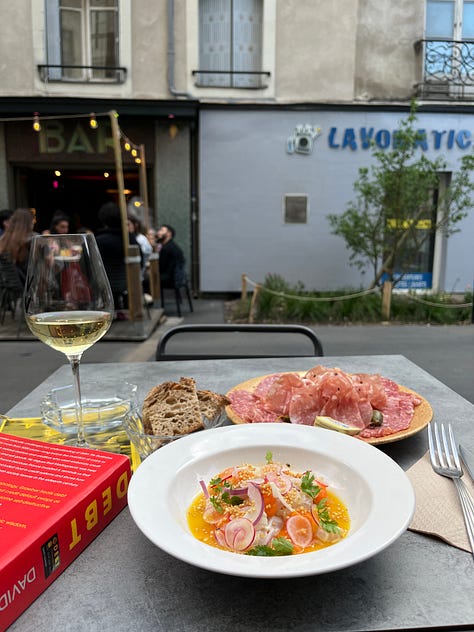

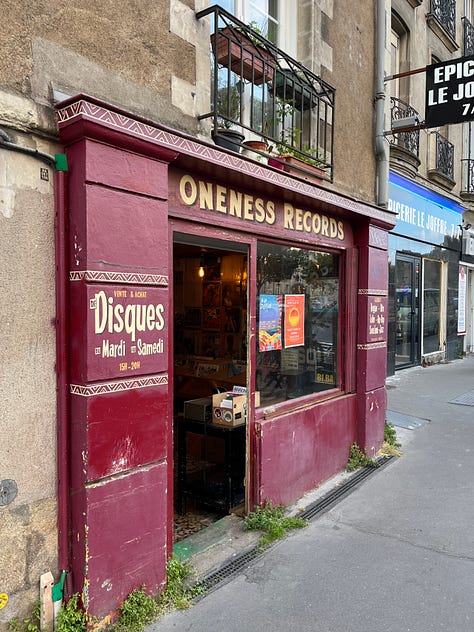
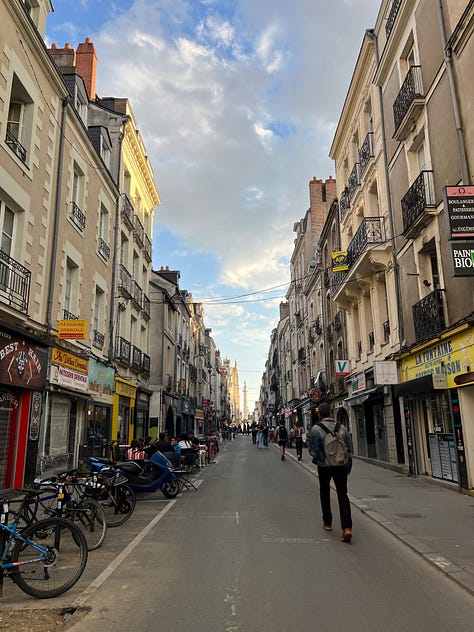
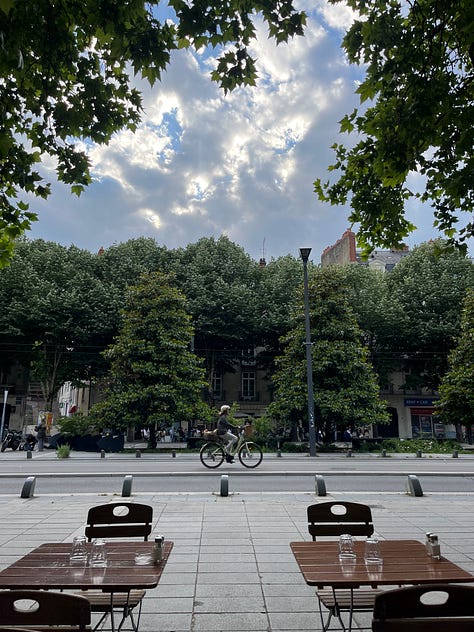
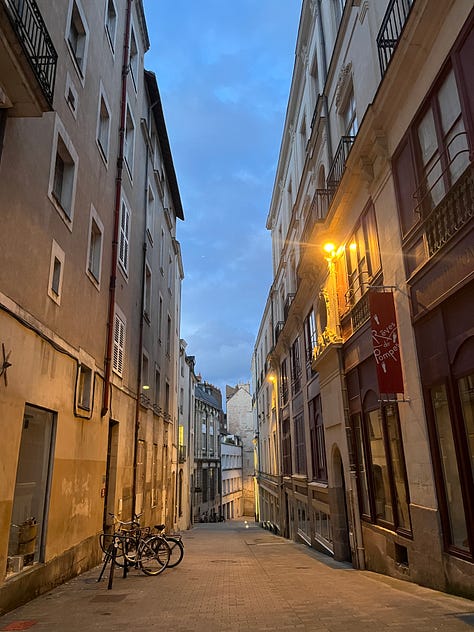


Alternatively, Graslin and Bouffay (especially along Rue Maréchal Joffre) have many restaurants and bars great for summer nights. I had a lovely evening sitting outside listening bar/bistro Voyage Voyage on the lively pedestrian street.
Easy Day Trips By Train
Pornic for seaside getaway and coastal walk to see the old-school fisheries (lunch on the beach at La Villa Noë and fresh strawberry ice cream at La Fraiseraie.
Clisson for medieval town and nearby vineyards.
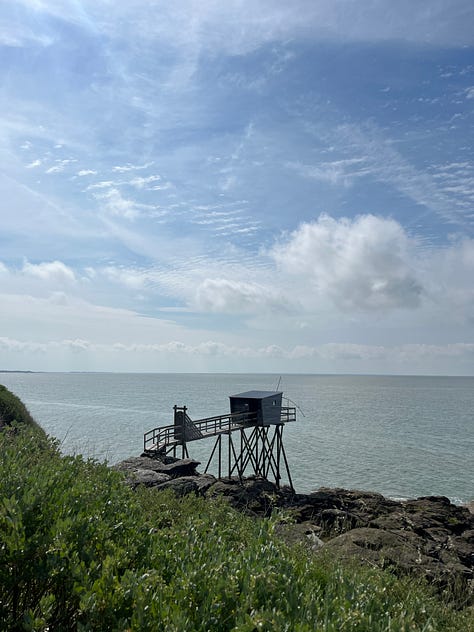

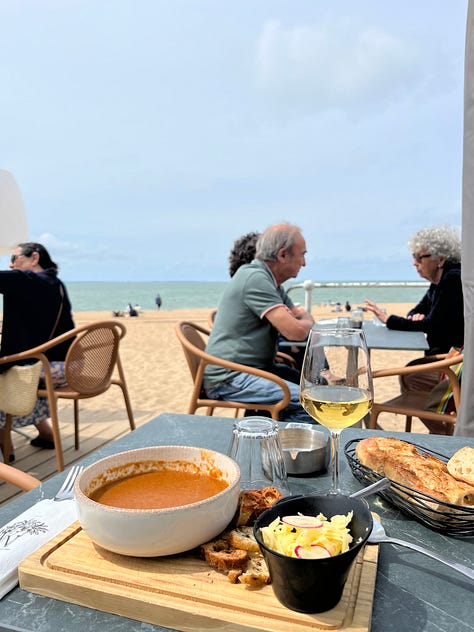
Additional Notes
Le Voyage à Nantes is the local tourism organization that does an amazing job building the tourism infrastructure and organizing helpful information on the best of local offerings. It’s almost overwhelming to read through all the recommendations on its websites but I would recommend at least a quick browse. They also have an office by the castle.
Les Tables de Nantes is the food & drink equivalent of above. Again, almost overwhelming amount of information, but great starting point for the foodies. It’s also hard to go wrong with picking what to eat in Nantes given the quality of produce and the fact that most places are independently run by teams who put a lot of thought into what to offer.
The Loire region is also very famous for Muscadet wine, which is an aromatic, dry, crisp white that goes so well with seafood. I had at least one glass with every meal—no regret.
Traversée Bretonne is a bigger road trip for the region that looks interesting , which I’m saving for next one.
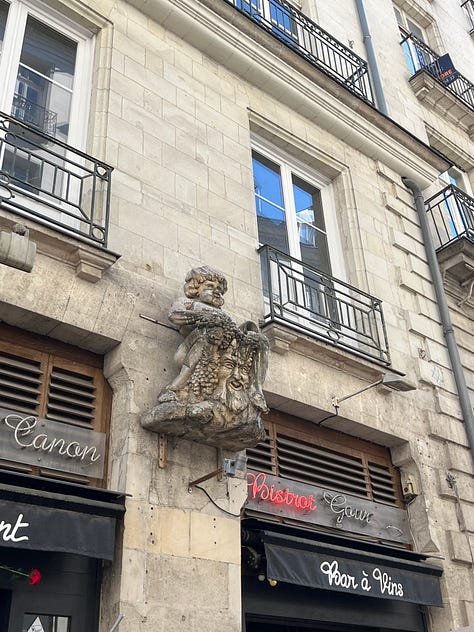

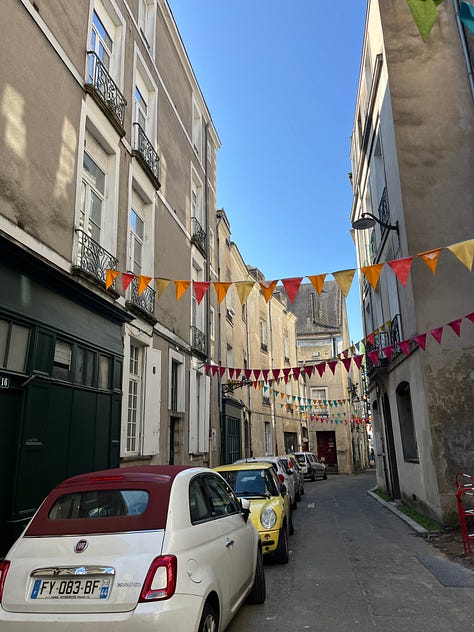
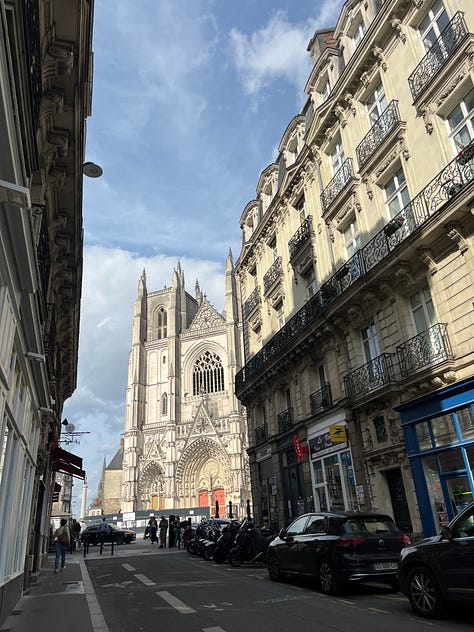

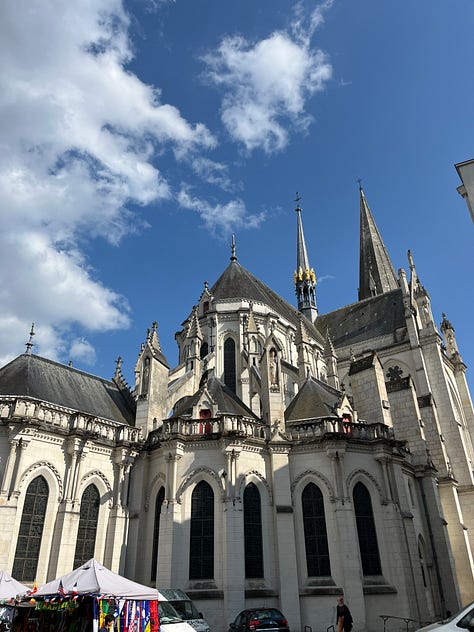


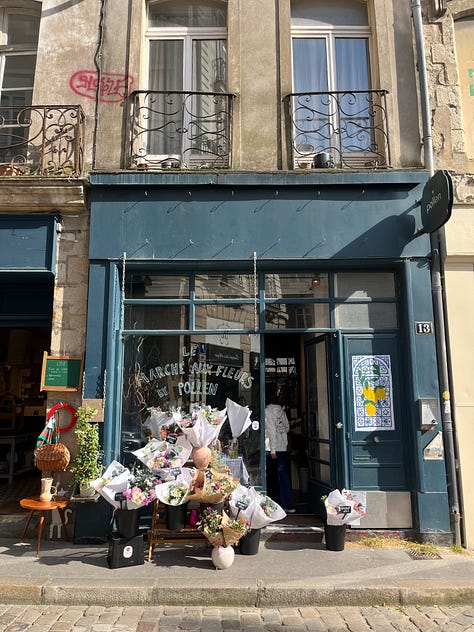

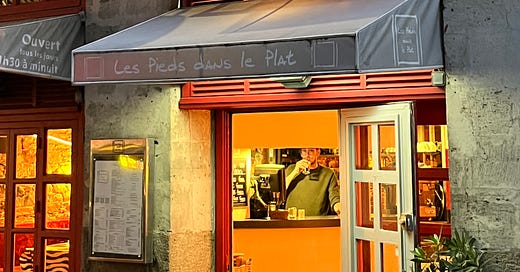



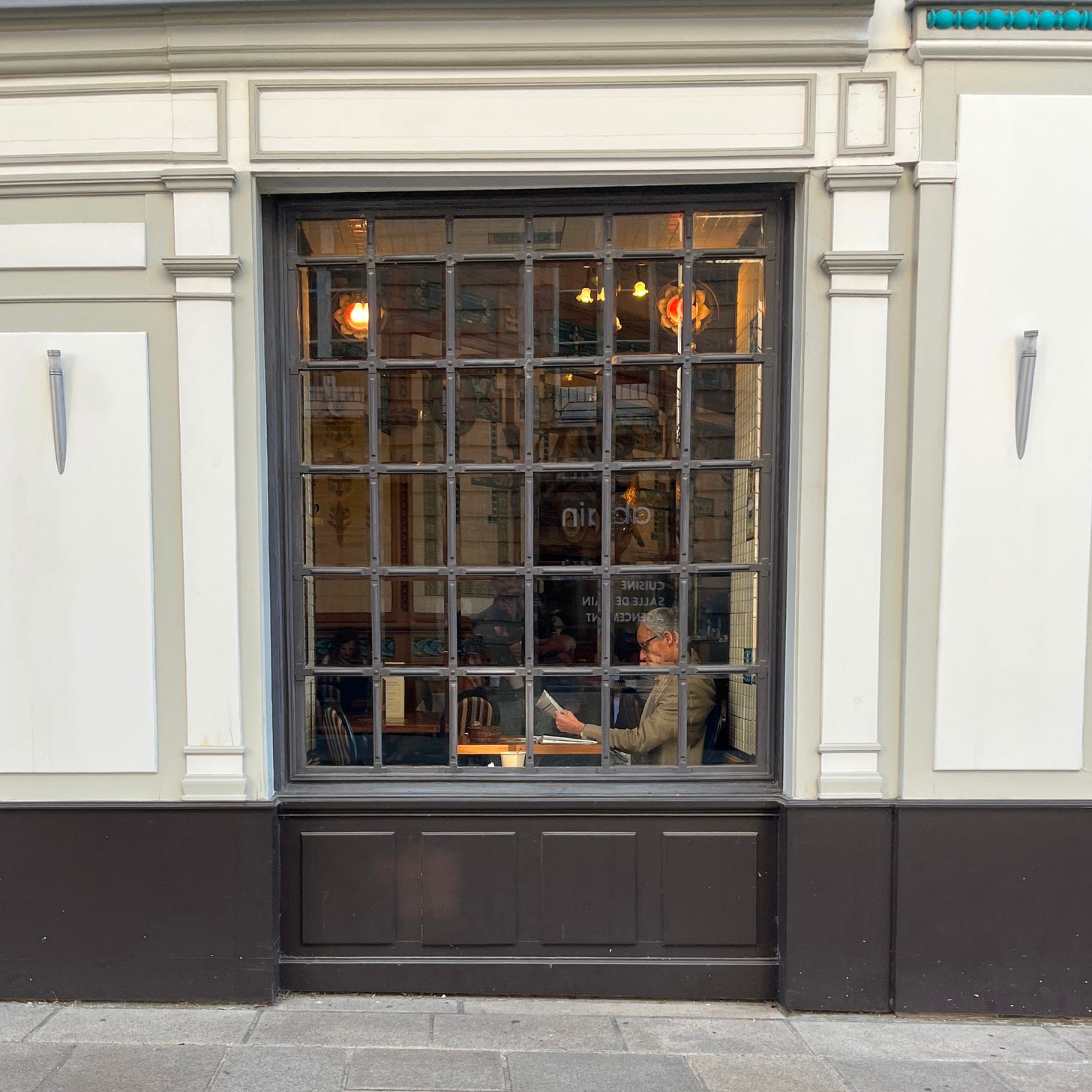
你的生活我的梦